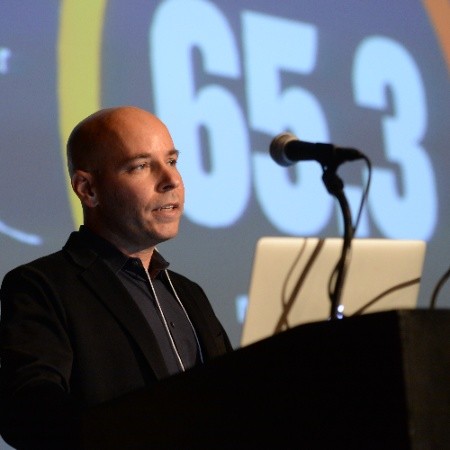The CSR reporting companies club is adding a new member. This is good news for the club because this is not just another company, but Bank of America (BofA), one of the world's largest and powerful financial institutions, which is releasing today its first CSR report ever. This is an interesting report as it provides an opportunity to see how BofA is doing in light of the bank’s mission to become the world’s finest financial services company. Does this aspiration also relate to the bank’s social and environmental impacts? I looked into the 87-page report to find some answers.
Although it is the first CSR report released by BofA, you understand pretty quickly that BofA is no stranger to CSR and sustainability. Indeed these are issues the bank has been addressing for some time. For example, in 2004 BofA adopted the Equator Principles, a voluntary set of environmental and social screening criteria and guidelines that provide a framework for managing project financing. So it’s no wonder the bank is capable of presenting in this report couple of major achievements, including:
- Providing capital, expertise and products to manage the transition to a low-carbon economy. Since 2007, the company has invested $11.6 billion in solar and environmental projects as part of a larger $20 billion, 10-year Environmental Business Initiative.
- Providing $207.9 million in philanthropic giving in 2010, making the bank the second largest cash giver in the U.S.
- Investing $168.5 billion in community development in 2010, the second year of a 10-year, $1.5 trillion community development goal.
- Surpassing its goal to achieve an overall emissions reduction of 18 percent within the legacy Bank of America portfolio between 2004 and 2010. BofA also reduced Scope 1 and 2 emissions by 8 percent in 2010 alone.
Sometimes it’s easy to get lost in such a detailed report. It's difficult to focus when when so many broad figures and facts are presented.
One key is to look for the places where the bank has the most significant impact on the environment and society. According to Alex Liftman, Global Environmental Executive at Bank of America, BofA sees both the tremendous responsibility and opportunity to positively impact the environment and the communities they serve by putting capital to work to help advance a low-carbon economy.
BofA certainly makes an effort to put its capital to work in the right direction. In 2007 the company announced a 10-year $20 billion Environmental Business Initiative, which is addressing climate change through their lending, investing, products and services and enhancing the efficiency of their own operations. In 2010, BofA reached the $11.6 billion mark, which means they’re on track to meet this goal.
Even if BofA is doing well with regards to its own 10-year $20 billion goal, the report doesn’t include a comparison to other large banks, so you can’t really tell if this goal is very ambitious or not. To find that out, you actually need to read other banks’ reports and make the comparison by yourself. For example, you’ll see that Wells Fargo reports it “has provided more than $6 billion in financing for greener business opportunities,” or that J.P. Morgan has invested over $3.2 billion and raised more than $3.5 billion from co-investors in renewable energy projects.” As you can see, BofA easily stands above all the rest.
The report also provides an opportunity to learn about BofA’s efforts to promote sustainability among its stakeholders. After writing earlier this week on employee engagement in the banking industry, I was curious to hear how it works at BofA. Liftman told me that they also identified the connection between CSR and employee satisfaction, retention and company performance.
“We are not an exception when it comes to the challenges of employee engagementaround sustainability—particularly given our size and geographical diversity,” she explained, “but, we recognize the important role our employees play in helping us achieve our sustainability goals, and we also want to give them the opportunity to set personal carbon reduction goals in a way that fits into their lifestyles while helping them save money.”
One of the main criticisms of CSR reports is that they tend to emphasize the good and hide or totally ignore the bad. BofA should be credited for taking various measures to ensure the report is fair and balanced – from comparing reported achievements to the original goals to including a stakeholder feedback together with the steps BofA has taken to address this feedback. It’s also important to mention that this report, unlike most U.S. companies’ CSR reports, is audited by a third party.
By the end of the report it’s clear that even though BofA still has many challenges ahead with regards to its social and environmental impacts, it certainly understands that to be the finest financial services company also means to be a responsible company.
Image credit: I-5 Design & Manufacture, Flickr Creative Commons
Raz Godelnik is the co-founder of Eco-Libris, a green company working to green up the book industry in the digital age. He is also an adjunct professor in the University of Delaware’s Alfred Lerner College of Business and Economics.

Raz Godelnik is an Assistant Professor and the Co-Director of the MS in Strategic Design & Management program at Parsons School of Design in New York. Currently, his research projects focus on the impact of the sharing economy on traditional business, the sharing economy and cities’ resilience, the future of design thinking, and the integration of sustainability into Millennials’ lifestyles. Raz is the co-founder of two green startups – Hemper Jeans and Eco-Libris and holds an MBA from Tel Aviv University.














